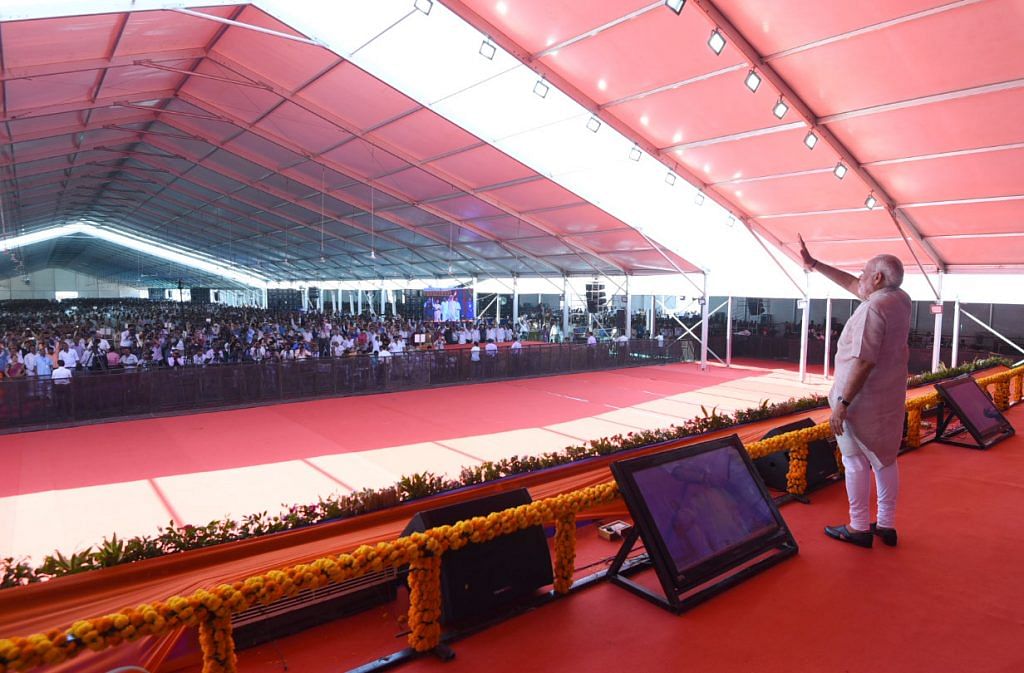The Gujarat model of economic growth and development is premised on the claims of accelerated infrastructure development of roads, highways, dams, and a spike in foreign investment. But critics have said that moderate achievements have been over-hyped, and it does not account for the decline in social indicators. The Patidar agitation of 2015 further emphasised the waning job market in Gujarat.
Is the Gujarat model of economic growth and development a myth or reality?
It is the oldest truism in marketing that nothing fails more disastrously than an obvious lie. Let’s apply that test to Gujarat politics. Narendra Modi’s political opponents and ideological critics dismiss him as a mere marketing man. Now, if all the claims that Modi has made about economic growth, industrialisation, improvement in quality of life and so on are fallacious as his opponents insist, why has he continued to win so emphatically for 15 years?
Unless he has such super-human powers that he can even defy that time-tested marketing logic.
And if that is so, how come all the arguments of his opponents fail to convince the voters? They say that his claims of growth and development are all fiction, and that the Gujarat model is just a sham — unless you call the ghettoisation and political marginalisation of Muslims a success.
Voters are not convinced because it is an obvious lie.
Gujarat has seen visible and palpable growth. You can see it in its industry, its roads, 24-hour power supply (for almost a decade now), water management and urbanisation. You cannot miss it even if you spend a couple of days travelling through the state, talking to people. Unless, you are so blinded by your voting preferences, or your principled opposition to his ideology and the 2002 past that you choose not to see it.
Here are other sharp perspectives on the Gujarat model of economic growth:
Yoginder K. Alagh: economist and former union minister
Deepender Singh Hooda: MP, Congress
Maitreesh Ghatak: professor of economics, LSE
Tavleen Singh: author and columnist
Gaurang Jani: lecturer, dept of sociology, Gujarat University
Atul Sood: professor, JNU
Sushmita Dev: congress MP
Gujarat fixed its roads ahead of any other state in the west-central region. I say so as a frequent and extensive road-traveller, particularly during the elections. Its scheme of separating feeders for agriculture, industrial, commercial, and domestic use is a nationally-acknowledged and followed innovation. Dehej, Ankaleshwar, Hajira, Hallol, Jamnagar, Mundra (oops! Adani!!), Dholera, Pipavav, and Vapi are all global-sized industrial hubs. You can find much fault with them, on account of use of discretion, cronyism, or the environment. You can claim, as the Congress does in each campaign, that most of the industry was brought by them in their times, particularly under late Chiman Bhai Patel. But you can’t deny it exists.
Unless you are daft, or don’t know your marketing. Remember: nothing fails like an obvious lie. So, attack Modi in Gujarat on a dozen other things if you so wish: poor social indicators, lack of local leadership, remote-control rule from Delhi, or the condition of Muslims, tribals, and Dalits. You might have some chance of success. But not on economic, industrial, and infrastructural development and growth. It will fail.
Shekhar Gupta is Editor in Chief, ThePrint
